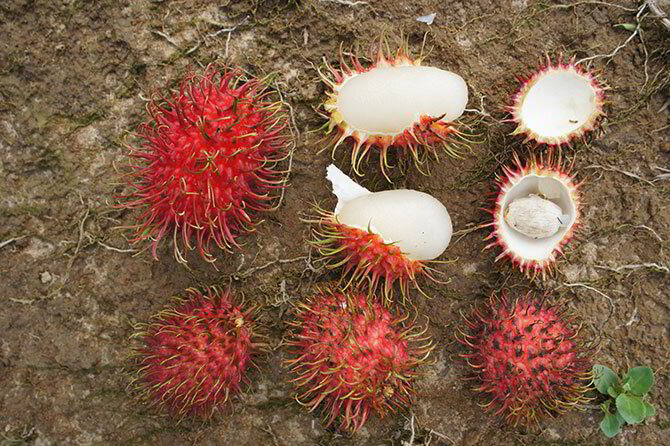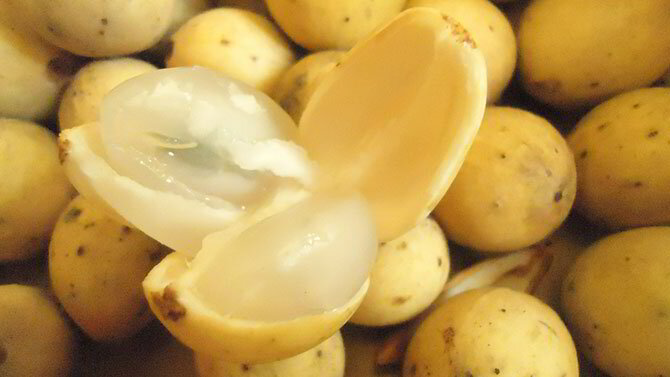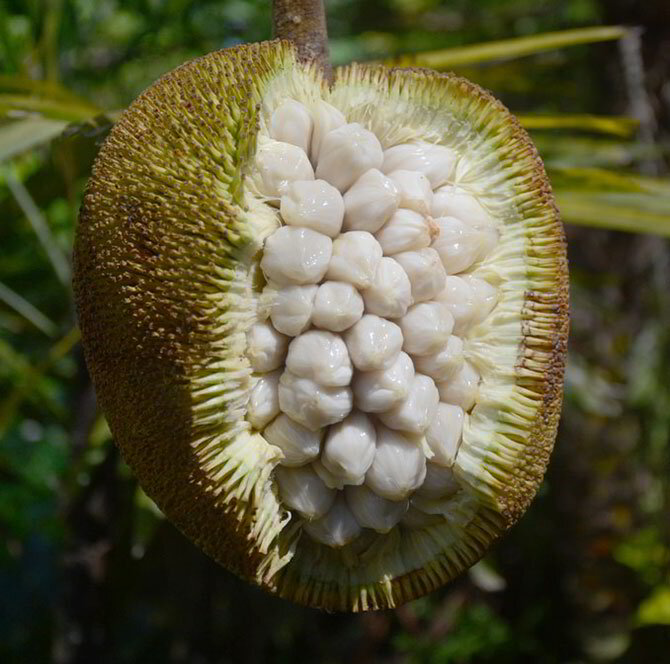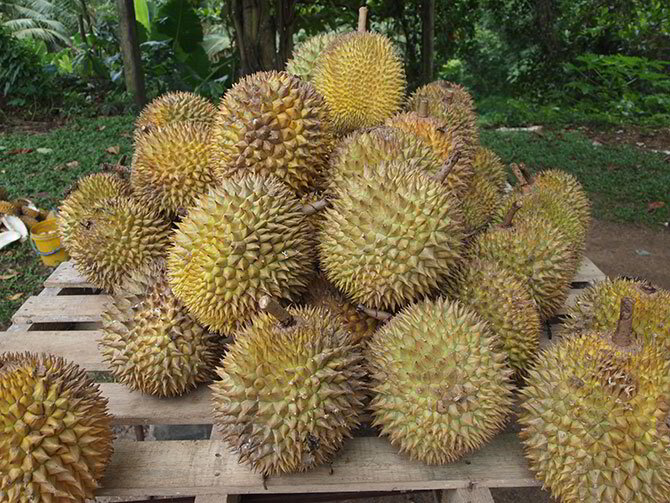We had a little taste test at the BADLADZ Beach Resort here in Puerto Galera of the Fruits in the Philippines. The BADLADZ crew grabbed several kinds of fruit in the Philippines include rambutan, lanzones, marang, and the notorious and controversial (seriously!) durian fruit.
Rambutan
Rambutan is a common fruit in Southeast Asia mainly in Indonesia, Malaysia, Thailand, and the Philippines.
The rambutan is a medium-sized tropical tree in the family Sapindaceae. The name refers to the edible fruit produced by this tree. The rambutan is native to the Indonesian region, and other regions of tropical Southeast Asia. It is closely related to several other edible tropical fruits including the lychee, longan, and mamoncillo.

Malaysia has the most variety of cultivars, wild and cultivated propagated commercially in small orchards. It is one of the best-known fruits of Southeast Asia with Thailand being the largest producer. The fruit are fresh, used in making jams and jellies, or canned. Evergreen rambutan trees with their abundant coloured fruit make beautiful landscape specimens.
The aril is attached to the seed in some commercial cultivars, “freestone” cultivars are available and in high demand. A single light brown seed is high in certain fats and oils (primarily oleic acid and arachidic acid) valuable to industry, and used in cooking and the manufacture of soap. Rambutan roots, bark, and leaves have various uses in traditional medicine and in the production of dyes.
Lanzones
Lanzones or langsa in the Philippines, is the plant mostly on the southern part of Luzon. Especially in Paete, Laguna, due to the species’ narrow range of conditions favorable to its survival.

Also in Northern Mindanao particularly in places as Butuan, Cagayan de Oro, and Camiguin. The Camiguin variety is especially sweet and succulent.
The fruit can be elliptical, ovoid or round in size. Fruits look much like small potatoes and are borne in clusters similar to grapes. The larger fruits are on the variety known as duku. With thin, yellow hair giving a slightly fuzzy aspect. The skin thickness varies with the varieties.
The fruit contains 1 to 3 seeds, flat, and bitter taste, the seeds are covered with a thick, clear-white aril that tastes sweet and sour. The taste is like a combination of grape and grapefruit. The sweet juicy flesh contains sucrose, fructose, and glucose. For consumption, cultivars with small or undeveloped seeds and thick aril are preferred.
Marang
Marang has a strong scent and considered superior in flavor to some other fruits. For some, the scent reminds them of the durian without being so intense and is in the thick skin and not the fruit pulp. the marang is a tree in the mulberry and fig family Moraceae. It is native to Borneo, Palawan, and Mindanao Island, and is closely related to the jackfruit, cempedak, and breadfruit trees which all belong to the same genus, Artocarpus.

It is best when not allowed to ripen thoroughly on the tree giving the taste hints of a mildly creamy, almost juicy banana. When they ripen on the tree, they turn a brownish color and eventually drop to the ground and easily split open.
Marang is cultivated in the Philippines, southern Thailand, Malaysia, Brunei, Indonesia, and India Tripura. As indicated by the scientific name. The fruit has a strong scent and is considered superior in flavor to both jackfruit and cempedak. The scent reminds some of the durian, but is not so intense, and is in the thick skin and not the fruit pulp.
The taste has hints of a mild creamy, almost juicy banana, and is best when not allowed to ripen thoroughly on the tree. Those ripened on the tree turn a more brownish color and will eventually fall to the ground and easily split open.
Durian
Durian is popular by many in southeast Asia as the “king of fruits”. Its distinctive for their large size, strong odor, and thorn-covered outer husk. The five cells are silky-white within and are filled with a mass of firm, cream-colored pulp, containing about three seeds each. This pulp is the edible part, and its consistency and flavor are indescribable.
A rich custard highly flavored with almonds gives the best general idea of it. But there are occasional wafts of flavor that call to mind cream cheese, onion-sauce, sherry-wine, and other incongruous dishes. Then there is a rich glutinous smoothness in the pulp which nothing else possesses, but which adds to its delicacy. It is neither acidic nor sweet nor juicy; yet it wants neither of these qualities, for it is in itself perfect.
It produces no nausea or other bad effects and the more you eat of it the less you feel inclined to stop. In fact, Durian is a new sensation worth a voyage to the East to experience.

Durian Taste and Smell
The edible flesh emits quite a distinctive odor that is strong and penetrating even when the husk is intact. Some people regard the durian as having a pleasantly sweet fragrance. Others find the aroma overpowering and revolting.
Some people regard the durian as having a pleasantly sweet fragrance. Others find the aroma overpowering with an unpleasant odor. The smell evokes reactions from deep appreciation to intense disgust. It’s like rotten onions, turpentine, and raw sewage. The persistence of its odor, which may linger for several days, has led to the fruit’s banishment from certain hotels and public transportation in southeast Asia.
By contrast, the nineteenth-century British naturalist Alfred Russel Wallace described its flesh as “a rich custard highly flavored with almonds”. You can eat it at its various stages of ripeness. It is used to flavor a wide variety of savory and sweet desserts in southeast Asian cuisines. You can also cook and eat the seeds.
Fruits in the Philippines Video
Ever wonder what a durian actually looks and smells like? Watch to find out!
Try Fruits in the Philippines at BADLADZ Beach Resort
If you would like to come out to the Philippines and try some local fruit at BADLADZ Beach Resort. Visit our website at https://badladz.com/contact-us/.
Cheers,
Sean
Photo Credits:
Share this blog to your friends:



